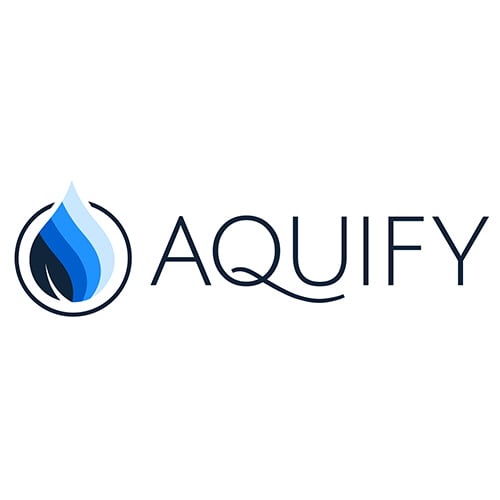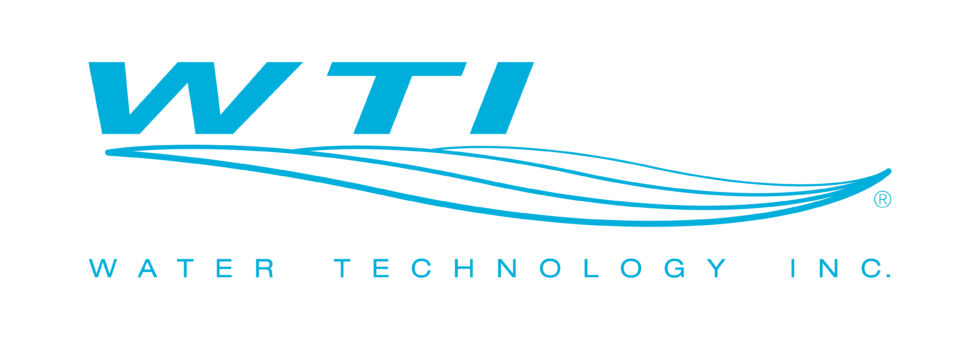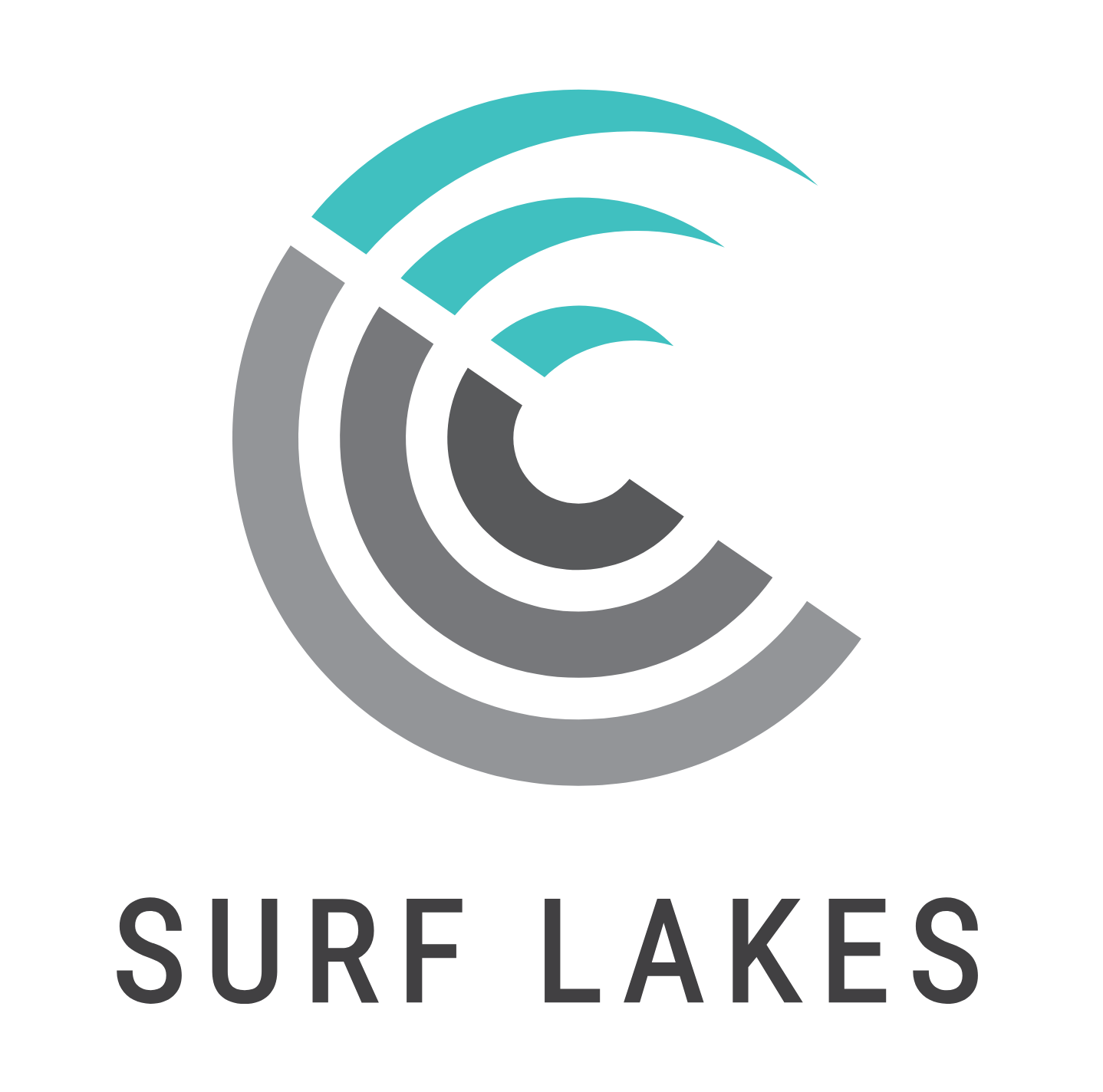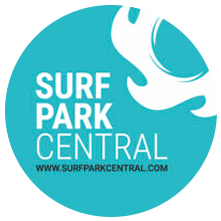By Jess Ponting
Article Includes:
- Review of the groundbreaking event
- DSRT Surf Project details
- DSRT Surf lagoon revenue projections
- Interviews:
-
- John Luff – Beach Street Development and Operations, DSRT Surf
- Bruce Greenfield & Diego Alessi, AO
- Blake Hess – Beach Street Development and Operations, DSRT Surf
- Dave and Denise Hilts – Founders, Coachella Valley Surf Club
- Doug Sheres – Beach Street Development and Operations, DSRT Surf
- Jan Harnik, Mayor Pro Tem, City of Palm Desert
- Eric Ceja, Director of Economic Development for the City of Palm Desert
- Andy Ainscough – Founder & Developer Adventure Parc Snowdonia
- Cheyne Magnusson – Chief Hydro Officer, Palm Springs Surf Club
The partnership that conceived of DSRT Surf effectively ended my first surf park consulting business, so I had some full-circle feelings bubble up as I negotiated the switchbacks down the gorgeous eastern face of the Santa Rosa Mountains and descended into Palm Desert.
I brought enthusiasm to the consulting business, while my business partner John Luff was serious, dedicated, and brought years of direct surf park industry experience. John was trying to sell surf park consulting services to the former Mayor of Solana Beach, Doug Sheres. Doug is a very smart dude and quickly recognized that he’d be much better off with John as a business partner rather than as a consultant. He was, of course, correct.
It would be another seven years before two ceremonially shined and polished yellow diggers would roll through the warm golden light of the desert dawn and onto a large sandy patch, cleared of tumbleweeds, between startlingly verdant golf course fairways.

I followed the golf cart trails to the Desert Willow clubhouse as first light morphed into sunrise. Sprinklers sprinkled. Workers tended greens, raked leaves and set out buckets of balls. Scores of golf carts filled the parking lot in anticipation of the day ahead. Golfers with early morning tee times were inside the clubhouse making tough decisions: coffee or bloody mary?
Down the hall, in a conference room, one hundred or so chairs were set up. Foam board renderings of the finished lagoon, hotel and villas alongside pitch deck slides detailing market positioning lined the walls. DSRT Surf branded stickers, caps, hard hats, and high visibility vests combined with branded ceremonial blue-handled shovels and surfboards signed by the likes of Gerry Lopez and Paul Naude to set up the iconography of the project.

DSRT Surf staff wrestled with the controls for the electronic blinds, worried about the PA system, and struggled to locate a venue manager this early in the morning. These refreshingly normal event-related concerns masked the gravity of a pretty singular event: the official shift from planning to construction on one of the first 20 new generation surf parks in existence, and arguably among the first and most comprehensive of a new generation of surf anchored resort/residential developments. Stakeholders, surf park legends, and industry pioneers from around the world assembled to celebrate the groundbreaking milestone.
Project Details

The 17.69-acre DSRT Surf site, 3 acres of which have been developed for parking, will be built out in phases. While land use allowances in the Specific Plan for DSRT Surf, which was approved by the Palm Desert City Council in November 2019, included a six-acre surf lagoon, up to 350 hotel rooms, and 88 residential villas, the final plan incorporates a 5.5-acre 52-module Wavegarden Cove, a 139-key boutique hotel, and 57 high-end detached residential villas.
Phase one, scheduled to be completed by mid-2026, will include offsite and onsite improvements, infrastructure for the residential villa lots and hotel, a completed surf lagoon, surf center, skate bowl and pump track, pickleball courts, swimming pool and jacuzzis, and graded pad sites with utilities stubbed to the 57 residential lots. Phase two involves the completion of the residential villas and the 139-key boutique hotel.
Wavegarden advertises the upper capacity of a 52 module Cove at 30-40 on the reefs (15-20 on each side) and 50 in the bays (25 on each side) – though it should be noted that at the highest settings, currents are too strong to allow beginners in the bays. So, 90 surfers at a time is the maximum capacity of the lagoon, although DSRT Surf will be limiting capacity to 70 surfers at any one time for a more premium experience. DSRT Surf has been approved for 17.5 hours of operation per day and Palm Desert has 350 days of sunshine per year.
In contrast to most other surf park destinations, peak season for the region is winter when the area is at maximum beauty with its clear skies, warm temperatures, and surrounding snow capped mountains. It remains to be seen if this seasonality holds true for surfers as winter provides higher quality surf in the ocean, while summer in southern California is notoriously small with prevailing onshore breezes.
What kind of income might be expected from the surf lagoon? Let’s make educated assumptions about utilization rates, pricing, operating hours and OpEx and develop projections.
Assumptions for Income Projections (these are not official assumptions and projections, they are my best guesses)
- Looking at the performance of existing Wavegarden Coves, it is likely that reef wave sessions will be close to capacity while bay sessions will not be.
- Reef sessions/hr at the least expensive Coves are around $100, and the most expensive sessions on advanced waves outside of KSWaveCo are around $400/hr. Let’s calculate conservatively for average hourly values of $100 – $300 at $50 increments.
- Let’s assume an annual average utilization of between 60% and 90% on the reefs and calculate at 10% increments
- Let’s assume an annual average occupancy of 20% in the bays. Peak season weekends are likely to be at capacity (50), while during off-peak times and seasons and during the most high-energy wave settings on the reefs, the Bays will be empty.
- Surf lessons in Wavegarden Coves are generally priced at a similar level to an intermediate wave on the reef. At the same time, free surfing or bodyboarding in the Bays is generally discounted by around 60% from the cost of advanced waves. Let’s assume a 40% discount on the average value of an hour sold in the Bays compared with the average value of an hour sold on the reefs (i.e., assuming that lessons will help to offset the heavily discounted free surfing sessions in the bays).
- Let’s assume 16 hours of commercial operation per day to allow a generous average of 1.5 hours per day for staff surfing and other non commercial run time (so 540 hours annually of non commercialized lagoon operating time – about 31 days of total run time: based on our utilization assumptions this removes 12,960 – 19,440 sellable Reef hours, and 5400 sellable hours in the Bays from annual inventory).
- Let’s assume a reasonable ballpark for all-in OpEx for the surf lagoon is $12,000,000 per year, including all inputs: energy, water, staff, filtration, bookings, etc.
Based on these assumptions, gross annual income from the surf lagoon could range from $17MM to $72MM. See the table below for details.
DSRT Surf Lagoon. Gross & Net Revenue (after OpEx) Projections. Based on my assumptions, not official.

Stakeholder Reflections on the DSRT Surf Project
While onsite with my handy Zoom H6 audio recorder, I took the opportunity to interview stakeholders and record statements, including some from the development team, local community members and city councilors, industry pioneers and competing local surf parks.
I started with members of the development team who were running on coffee and nervous energy while setting up the room before guests arrived and the official ceremony began. The first person I managed to peel away for an interview was John Luff.
John Luff, founding partner of Beach Street Development, partner at Desert Wave Ventures, developer of DSRT Surf
We are here for the groundbreaking of DSRT Surf, developed and operated by Beach Street Development and Operations. And it’s been a seven-year journey to get here today, so we’re excited.
We had a ton of curveballs. COVID was a massive curveball for the entire world of hospitality resort development, that’s for sure. The financial market over the past couple of years certainly hasn’t helped. Just achieving entitlement in California is far from an easy task in and of itself for a first-of-its-kind surf-anchored resort and residential development. There were a lot of firsts that we had to go through from a regulatory standpoint, whether that’s local, regional, state level, or even national level in some cases—so navigating that? It’s been quite the mountain to climb.
And now you’re hitting the construction phase. How’s it looking in terms of geotechnical? Is the site behaving?
The site is behaving! We’ve actually got great dirt. It’s part of why we chose the site we did out here in the valley because the valley actually has a pretty diverse geotechnical quality. As you move from one end of the valley to the other, especially as you get down closer to the Salton Sea, the geotech is not nearly as good. But where we sit happens to be a couple of hundred feet above the aquifer here. And we’ve effectively got all sand. So we’re digging our hole on the beach, and the waves are coming.
We’re super grateful for all the people that have helped us get here. It’s been a massive effort across all of our partners on the development side. Don Rady of course, the main investor in the project and majority owner. This wouldn’t have happened without him. As well as the local city council. We’re super, super excited to see most of the council that’s still in place today were the council members when we first started this journey. The staff that helped us get here, a lot of them have also been here with us since the very beginning and without their support, this wouldn’t have been possible. And the pioneers in the industry, who I now consider to be genuine friends in the space. You know, some people from the outside looking in might see us as competitors, but for us, it’s a big surf park family. So I’m very happy to be bringing everybody together. We’re genuinely grateful for the entire project team.
Among the early arrivals were the team from Architects Orange (AO) who have been a part of the DSRT Surf design process for the past four years. I asked the partner in charge Bruce Greenfield and the Director of AO’s Landscape Studio Diego Alessi about the nature of their involvement and the challenges of designing for the desert environment.
2 & 3. Bruce Greenfield (partner in charge) and Diego Alessi (partner and director of landscape studio) – AO
Bruce: So AO came in about four years ago, and started with concept design and charrette and laid out the project. All the different components, updated the programming, and then took the project from concept design through construction documents to permitting and looking forward to starting construction.
Diego: As part of this design process and the charrette that Bruce had mentioned, our involvement really comes in with the customer experience and how that relationship to the customer and the service work together. From an architectural perspective and a landscape perspective, we’d like to combine those efforts into the master plan. That’s sensible, that’s efficient. And it can generate revenue based on the surf park.
Bruce: A surf park that’s not near the ocean or the beach is an interesting animal. We look at the local environment. We check wind speeds to make sure we’re orientating the surf correctly. We look at the arrival experience to the project, making sure that the surf and the wave are prominent in that experience. We also look for how to lay out the site so that all the different uses on the site contribute to a greater whole. When you pull into the hotel, from the lobby, you want to have this great view of people surfing in the background from the restaurants in the bar and the pool deck. You want everybody to be participating in the surf and feel part of it, and let the surf permeate the whole site. Then there are environmental considerations. It’s hot here so providing shade, providing overhangs, covered patios, those kinds of things are crucial.
We’ve gotten very deep into the details of the workings of the surf machines themselves. We worked very closely with Wavegarden on this. We flew to Spain and spent three days with them, learning about their system. We’ve developed a certain expertise in how to make this happen. It’s fairly complicated and requires a lot of coordination. We’ve spent a lot of time learning about it to make it efficient and to make sure everything works. The operational side is also super important. We have learned through both Beach Street and other other projects that experience is a very important aspect of what we do and the experience starts long before you get in the water at the surf park.
Surf park industry veteran Blake Hess has the most diverse surf park operations resume of anybody in the world. Now part of the Beach Street team, Blake was directing the setup for the formal elements of the event and finally found a minute to speak with me once things were ‘just right’ and ready for visitors to arrive. I asked him to speak about the project, its impact on the local community, any sticking points in the development and his experience with geotechnical elements of the site and his approach to operations.
4. Blake Hess: Beach Street Development and Operations
Today, we have the groundbreaking celebration for DSRT Surf, which is a culmination of about seven years of effort by the team to get to this point. So it’s a pretty big milestone, and we’re all pretty excited. To see the pioneer Andy Ainscough from Snowdonia make it out for this event is pretty special. Not many of these have gotten to this point, so we’re pretty excited to be here.
Palm Desert has been a terrific partner of ours, and working together to really make this happen is going to be amazing for the city and the locals. We’ve worked with local schools to give the children out here an opportunity to surf. Many of them don’t make it over the mountains to the ocean, so to be able to come out here and surf is going to be amazing for them.
The Beach Street Development team did a great job putting together the Turf for Surf program that mitigated water usage. So they’re actually going out on the golf course, removing some of the turf that’s not necessary for golf and replacing it with drought-tolerant landscapes. That’s saving over 34 million gallons of water a year, and the surf lagoon, even if we drain and fill it once a year, we’re still looking at only about 24 million gallons a year. We have a net savings of well over 10 million gallons annually. That was one of the initiatives that the team took early on to be sure that we were doing what was right for the environment and right for the community.
Being from Texas, we have a lot of clay. So there is a lot more infrastructure and support that’s needed to build a surf lagoon there. I think it’s a much better situation here than it is in other sites.
As far as operations go, we use the term barefoot luxury, and that’s kind of what we’re going to go for. So, you know, we kind of look at Surf Ranch and try to match the feel and the atmosphere that they have out there.
I was really intrigued by Blake’s mention of community benefits. I am personally of the belief that, handled well, surf parks can be incredibly valuable community recreation assets that can help build community and connection through shared interest. I started scouring the room for local community representatives and came across Dave and Denise Hilts who founded the Coachella Valley Surf Club. They are pretty jazzed about the surf park race taking place in their region and what it might mean for local youth, and in particular, youth in underserved communities.
5 & 6. Dave and Denise Hilts – Coachella Valley Surf Club
We’re a nonprofit 501(c)(3) organization. We work with the community to get kids into surfing, donating equipment, scholarships and things like that. We’re residents here in the desert. We’ve been involved with all of the projects out here. I met Doug (Sheres) at the very first council meeting in Palm Desert, and I’ve known him since the very beginning. We follow it, and we speak all the time. I let him know what’s going on because I’m the resident here, and he’s, you know, not here. So he’s been a very big supporter of our club. And we’re really excited that he’s finally getting his project off the ground. Being a surfer, I can’t wait.
We’re originally from Huntington Beach and, through a series of events, ended up here in the desert about 16 years ago. I was a teacher in a poor area in San Jacinto, about an hour away. None of them had ever been to the beach, let alone surfed. I happened to mention that to Dave one day, and he thought, ‘We should give kids a chance to do that.’ So, we are focused mostly in East County, the migrant area. We brought the kids to the beach once or twice, and it was fantastic. The girls were surfing, and considering where they come from and what they have to deal with, it was wonderful.
There are not a lot of things to do out here in the desert for young people. Students in the summer, especially, so it’s great that we have these new venues where kids can learn how to surf. And the kids in the east valley have never even been to the beach. We want to get as many of those kids as we can interested in surfing, in the water, and surfing and learning about the sport and about the culture. That’s really our focus, and we are really, really, really excited about what surf parks could mean to our community.
If you want to learn more about our club, it’s the Coachella Valley Surf Club. We have a website. You can check it out. You can join. You can donate. That’s how we raise money. We just gave out $500 scholarships last week, and we do that through donations and by people joining our club.
At this point, it was time for the formal proceedings to begin, so we shuffled into the now crowded meeting room where Beach Street Development and Operations co-founder and partner Doug Sheres was about to speak. Doug began with an anecdote about visiting the WSL Surf Ranch with his wife and how that was a euphoric peak experience, even for those who didn’t surf and felt like it was good value, even at an $8,000 price tag. DSRT Surf, Doug explained, would be replicating that experience at a fraction of the cost. The following is an edited excerpt of his talk to the group.

7. Doug Sheres
The surf lagoon itself is five and a half acres. From the beach to where people take off, that’s two football fields long. So when you stand on the beach, people are so far away from you. When they take off, you can see them, but it’s way out there. Those waves that start out there and go into these bays, we call those beginner bays. They provide gentler, calmer waves for learning how to surf.
The whole lagoon provides an opportunity for everybody. Whether you’re a great surfer or whether you’re just beginning, it gets everybody out into the action. It’s a great experience.
We’re also providing a restaurant bar and other amenities like a skateboarding pump track All of this is built within the Desert Willow golf course community. There are two world-class golf courses. So it’s pretty spectacular. We often say if you could pick a place in the world to do this, this is absolutely the best place in the world. Literally right here in Desert Willow, surrounded by the greens, surrounded by the lake, surrounded by the mountains, and 350 days of sunshine a year.

Mayor Pro Tem of the City of Palm Desert, Jan Harnik, spoke next and referenced the difficulty in getting a project like this through the approvals and entitlements process. She noted that the council’s support for the project has been entirely contingent on Beach Street and DSRT Surf finding solutions to myriad issues and problems but that, ultimately, the city is excited to have a project that will benefit the region in terms of visitation as well as the local community having a new, healthy activity to participate in.
8. Jan Harnik, Mayor Pro Tem, City of Palm Desert
It’s been a long road to get there. There’s a saying that if you want to go fast, go alone. If you want to go far, go together. And we’ve gone together. When I walked in, John said to me, “Thanks for being behind us the whole way.” And I said, “We weren’t behind you the whole way.” And we weren’t. Every time there was an issue that we discovered, we were a little apprehensive. But every time there was an issue, this group found a solution. Every time.
So we’re here today. It’s been a long, painstaking process, working with our community, finding solutions to the issues and working together. And we got here. And we’re proud to be here today.
This is going to be such a great project for Palm Desert, really for our whole region and our visitors. This is one of these projects that will complement all of the other outstanding projects in Palm Desert and in the region. And we are so proud that it’s in Palm Desert. So, thank you all for being here. We look forward to seeing all the healthy activities and all the great people who come here to enjoy our community. All our community members now have something great to do, and our students and young people have something great to do during the summer. Something wholesome. Something good for them. We’re proud to be the host of that. So, thank you for all of your hard work. Thank you for your solution-oriented process and helping us through this.
Eric Ceja, City of Palm Desert’s Director of Economic Development, gave some really interesting insights into the project from the perspective of the city, their concerns, and the departments involved in the process that balanced rigorous accountability for the project and its benefits for the local community with the need to assist the development group through the approvals and entitlements process.
9. Eric Ceja, Director of Economic Development for the City of Palm Desert
I really thank John, DSRT Surf, and the rest of the Beach Street team for bringing this project forward. This is a significant investment into the city of Palm Desert. One that we’re pretty excited about. You’ve been welcomed to Desert Willow Golf Course here, but this is a city course managed by Kemper Sports. There has been significant coordination vertically with Derek White of Kemper and the whole Desert Willow team to truly look at the impacts of the DSRT Surf project and what it really means for the desert.
This project is 100% privately financed, no city incentives. But, there are significant infrastructure improvements that come along with it. Not only utility upgrades, but new public parking that will also be installed. We’re hoping to have many events here that are successful for the whole region.
Our “Surf for Turf” program, which offsets the water use and protects the environment has been reviewed and approved by the Water District. They really looked at the impact of the water and how to really offset that use. Once this project is built and operating, and even during this construction, there will be significant employment opportunities, and of course, we’ll have a new great recreational amenity here for the Coachella Valley. Its really the first of its kind and scale in North America, so we’re really excited to have that here in Palm Desert.
For us in particular, we’re really happy to see that this can really help to increase our summer tourism market. A project like this takes equal leadership from the city side. I really want to make sure that we give a special thanks to our entire City Council and our City Manager for their effort in getting this project through as an addition to our Planning and Architectural Review Commission. Our public affairs manager has been doing a significant amount of outreach to the surrounding neighborhoods and businesses in this area. Our city engineer, and really, of course, our whole development services team. As hard as we have been on making sure that the community’s interests were protected, on the city side internally, there’s been a significant effort to make sure that we can get the project through the permitting process and into the construction process to get you open as soon as possible.
After the presentation of a certificate of recognition from the State Assemblyman’s office, the audience made the short walk across the car park to the development site and the polished and shiny earth moving equipment that had arrived at dawn. The blue ceremonial shovels were distributed among the Beach Street team and local council members and staff. Ceremonial dirt was ceremonially dug and the breaking of ground was official.


More people got in on the photo op, with the broader development team getting in on the act and individual project partner organizations getting their shots as well. While this was going on, I cornered two surf park pioneers who happened to be onsite – Andy Ainscough, developer of the first of the new generation of surf parks at Adventure Parc Snowdonia in 2015, and Cheyne Magnusson, who got his start in the early days of Waco Surf and now claims the title of “Chief Hydro Officer” at Palm Springs Surf Club.

10. Andy Ainscough – Founder & Developer Adventure Parc Snowdonia
I began by asking Andy to reflect on his place in surf park history as the first to market with the new generation of surf park and everything that has happened since.
It’s pretty humbling really. It’s been an emotional roller coaster. I’ve been underway for 12, coming up on 13 years, and we opened Surf Snowdonia in 2015. It’s exponentially grown in terms of the market, the technologies that have come on, and the parks that are opening, and it’s good to see. I think it’s becoming a little bit more of something people know about, you know. When we first opened the general public didn’t know what surf parks were. They didn’t know what to expect. So I think it’s good and only probably good for the whole market. And I think it’s incredible to see surf parks in such diverse places, you know. From ours in the UK to here, you couldn’t be any more different.
I asked Andy if he’s still interested in the surf park space given all that’s happened with Adventure Parc Snowdonia’s ‘Wavegarden Lagoon’ being closed down due to consistent breakdowns and maintenance challenges.
It’s been a lot. It’s been a tough one in many ways. You know, we’ve had some issues with our tech and things, but that happens. You know, we were the first mover. We’re definitely looking at options for our site. You know, whether that’s upgrading the tech or doing something completely different with it. Essentially, it’s a leisure site, you know. It still brings in 100,000 visitors. But I surf and that’s how the passion started. That’s how Adventure Parc Snowdonia started. We definitely want to stay involved in some way.
I asked Andy about the impact of the Parc on the local community and region.
People have been coming to holiday in North Wales since the 1980s. For the rivers, the mountains, the beaches. Alongside those, a couple of other artificial attractions have opened up that really started to draw people in and drive that staycation market in the UK. You know, our village had been an aluminum smelting works for 100 years. That closed in 2010 and 100 jobs were lost in the village. The whole community was struggling as a result.
Adventure Parc Snowdonia is bringing in hundreds of thousands of visitors, creating jobs, boosting the local economy, little businesses springing up in response, Airbnbs opening up to serve our visitors, you know. We’re very proud to have opened the first inland surf lagoon, but also the first surf park-centered surf club with the local residents. The local kids, anywhere between 10 and 16 years old, would surf essentially for free every Saturday morning and it created a surf community. We had lots of kids that have gone on to become surfers. I think it’s brilliant what it’s done for that community and for North Wales as a whole.
My final conversation was with Cheyne Magusson, who I really have a lot of time for. Cheyne has dedicated his life to surf parks over the better part of the last decade, moving his young family to run operations and oversee the Palm Spring Surf Club project. Cheyne’s position on a competitor entering the Coachella Valley echoed John Luff’s comments at the beginning of the day and went a step further to explore the impact a surf park might have on an individual level for the local community.
Cheyne deserves the final word. His framing of the event and the project moving forward were inspiring.
11. Cheyne Magnusson – Chief Hydro Officer of Palm Springs Surf Club
I am the Chief Hydro Officer of Palm Springs Surf Club. I’m a wave designer and a wave pool operator. We are at the groundbreaking of the DSRT Surf project that I have heard about and have been anticipating for years. And they’re finally breaking ground. I couldn’t be more stoked for them. I think it’s awesome.
You know, a lot of people ask me, oh, isn’t that competition? I don’t view it that way. I view it as complementary because I understand what surfers are and how they want to travel and spend their money. And even if you take the ocean as an example, you want to fly to a place that has multiple different waves of different kinds. Having multiple wave technologies in close proximity just makes it more attractive for people to travel here so they can surf and have more than one type of experience. I love that. I think it gives the kids in the desert, and we are seeing them show up at our park, a chance to connect with the surf culture and the surf industry. That leads them to be more conscious about the ocean, and ocean awareness and maybe turns them into real surfers. Then we’re growing the population of the stoked!
_________________________________________________
If you are interested in investing in this project, head over to the DSRT Surf website for more information.






























You must be logged in to post a comment Login